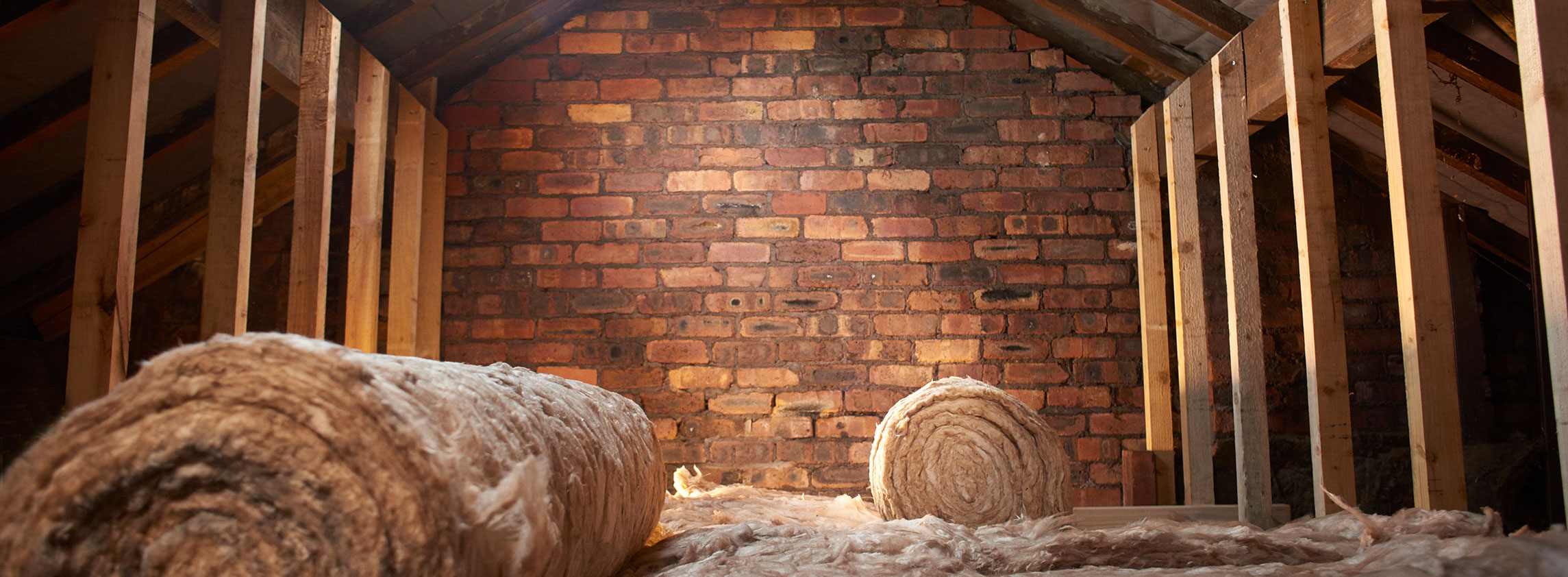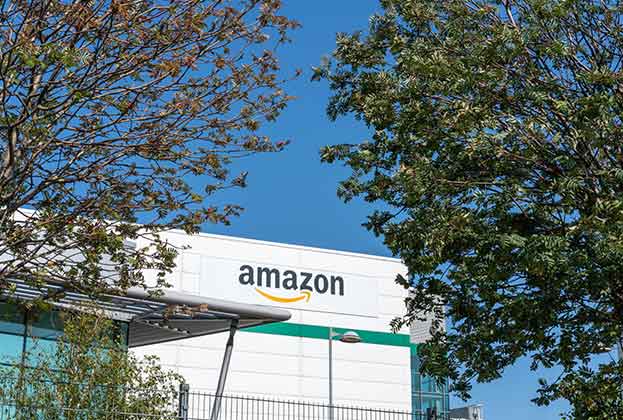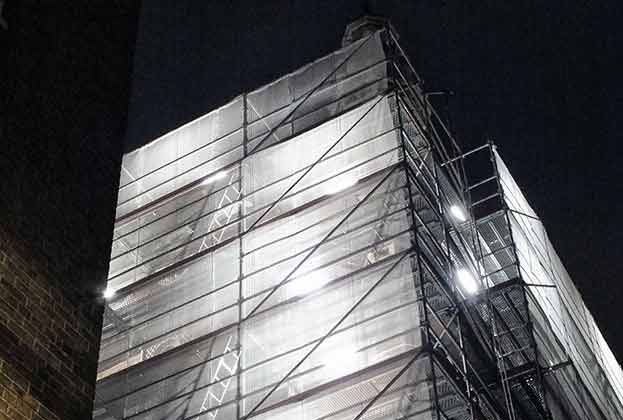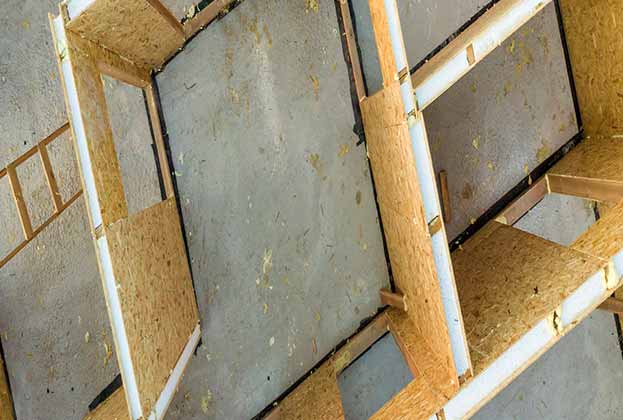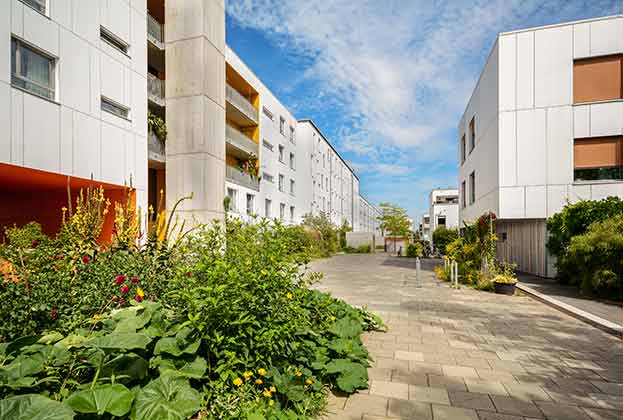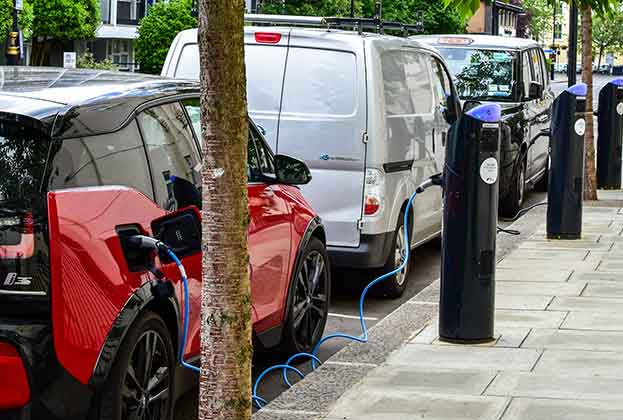The emissions of residential property could be halved if all properties were upgraded through improvements to their current estimated EPC potential
Operational carbon emissions will depend on both the energy source (renewable or non-renewable) and the energy efficiency of the building itself. Until renewable energy capacity has expanded to fully meet the UK’s power needs, improving the energy efficiency of the built environment will be a critical element of reducing carbon emissions. Energy Performance Certificates (EPCs) are therefore an imperfect but necessary part of understanding operational carbon emissions.
Until renewable energy capacity has expanded to fully meet the UK’s power needs, improving the energy efficiency of the built environment will be a critical element of reducing carbon emissions
Emily Williams, Associate Director, Residential Research
EPCs assess the efficiency of a property from A (most efficient) to G (least efficient), and recommend specific ways in which the efficiency of the property could be improved. In April 2018, Minimum Energy Efficiency Standards were introduced that made it a legal requirement for all privately owned properties to have an EPC rating of at least an E before they are sold or let. The legislation applies to both domestic and commercial properties, although there are some exemptions, for example if a property is a listed building. The majority of homes across England and Wales have an EPC D rating, with less than 1% achieving an A rating. Tightening environmental regulations for new homes has led to higher EPC ratings, with most new homes from the last decade achieving a B grade on their EPCs.
The impact of efficiency
How much of a difference is there between EPC bands in a home’s emissions? Obviously an EPC grade is not the only factor at play. Houses typically emit more than flats, and larger homes emit more than smaller ones. However, when taking equivalent sized homes and flats, each EPC grade climbed represents around a 30–40% reduction in CO2 emissions per year on a diminishing scale. Based on all domestic EPCs lodged in the last decade, there is the potential to halve the emissions of residential property if all properties were upgraded to their current estimated potential – typically including roof and cavity insulation and installing a condensing boiler. This is a reduction of around 50Mt of carbon per year.
An EPC B rated house of 900–1,000 square foot with three bedrooms emits just under two tonnes of CO2 per year. An equivalently sized house with a D rating emits around 4 tonnes per year. A 600–700 square foot flat with two bedrooms with an EPC B rating, emits 1.2 tonnes of CO2 per year; while an equivalent rated D flat would emit three tonnes per year.
The commercial sector
This is not just a concern for residential property. Savills have analysed the EPCs of retail and office stock in 22,000 retail locations across the country. As it stands, 130 million sq ft of space sits in the lowest two bands. Comparing current emissions to target emissions on the EPCs, retail and office stock is currently emitting 7.7Mt of CO2 more than would be achieved if all the recommended efficiency measures were implemented. The majority of this excess, 5.2Mt, comes from retail, with vacant units accounting for 20% of emissions. Vacant units make up less than 20% of stock, so are emitting disproportionately more than active units. This makes them prime targets for refurbishment or repurposing.
Cost savings
There are clear incentives for improving the efficiency of your home. From a societal perspective, reducing the environmental impact is vital in dealing with the climate emergency. Boosting the efficiency of your home also reduces the running costs, which provides an incentive to invest in improvements. Improving the country’s existing stock is a big undertaking.
The Green Homes Grant, which started in 2020, was a clear statement of intent. But a combination of restricted usage and a lack of capacity to carry out home improvements meant that only a fraction of the money allocated to the scheme was actually used. To meet the 2035 target for EPC C homes, the energy-efficient renovation of existing homes would need to increase by seven times its current rate.
The question is how to increase this rate. The government could intervene to set higher minimum energy performance standards earlier, but if this is not accompanied by expanded retrofitting capacity, and potentially a grant system, the cost could be prohibitive for some homeowners. Further incentives could be provided by mortgage lenders, if they are able to offer lower interest rates for more energy-efficient homes. This would also provide additional trigger points; at present an EPC is only needed for a property sale or letting, but lenders could prompt behavioural change at other events such as re-mortgaging.
Alternatives to EPCs
Currently, EPCs are the only consistent measure of energy efficiency in buildings across all properties in the UK. However, there are many critics of EPCs, who claim they can be misleading and focus too much on the fuel cost of heating a property rather than accurately measuring energy efficiency. The Environmental Audit Select Committee recently recommended that the methodology for producing an EPC should be fundamentally overhauled.
For the commercial sector, the Department for Business, Energy & Industrial Strategy has launched a consultation regarding a mandatory rating for the energy use of buildings of 1,000 sq m and above. This could see the NABERS UK scheme, which was brought over to the UK from Australia, become mandatory. It would start with the office sector and then expand to take in other non-domestic buildings.
Read the other articles within Spotlight: Property and Carbon – April 2021 below
